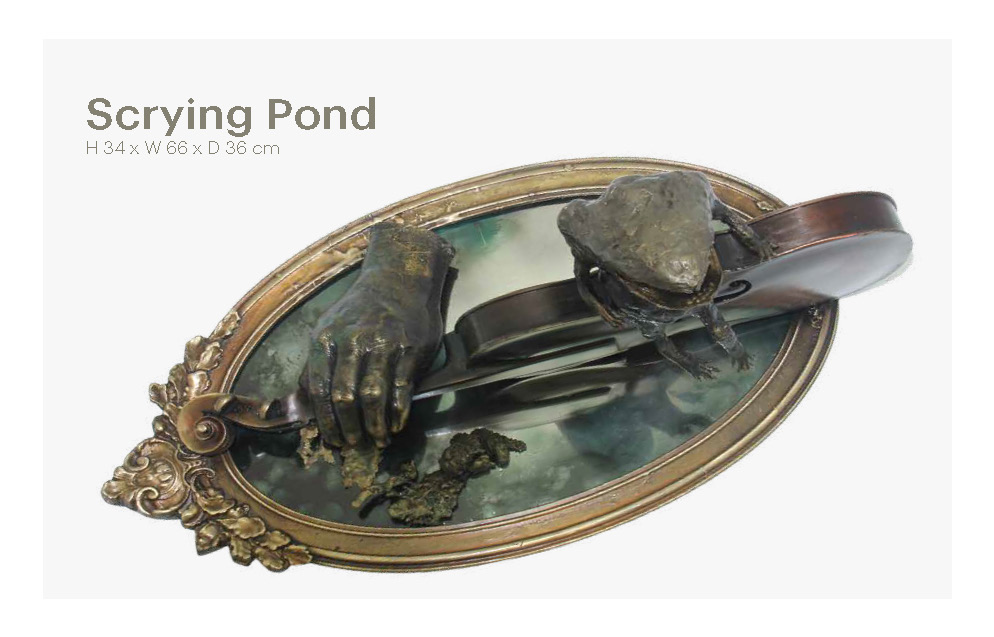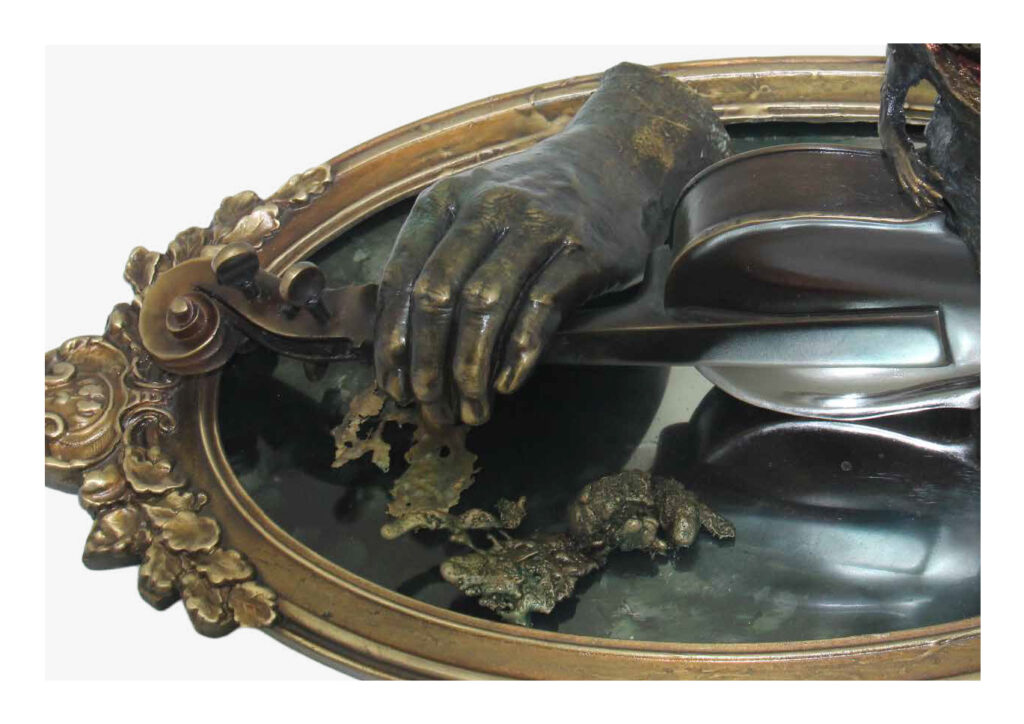Listen to Curatorial Text • Read Curatorial Text
Music: Trio no. 2 “This Mirror Has Three Faces”Previous | Next




A grotesque creature is depicted laughing, seated atop a violin bereft of strings—an image both striking and mysterious. Set upon a mirrored base that tantalises and reflects, it adds depth and intrigue, inviting contemplation on multiple levels. The stringless violin, held gracefully by a disembodied hand, symbolises a bridge between the artistic and the ethereal, resonating with the cultural richness of music’s universal language. Yet, in its silence, it questions the unspoken and the ineffable.
The disembodied hand adds a surreal quality to the scene, mediating between tangible and intangible realms. It suggests a detachment from corporeal reality, a connection between the absurd and the sublime, perhaps symbolising the elusive nature of true artistic expression. The absence of strings on the violin further complicates the metaphor, transforming the instrument from a tool of melody into an icon of silence, a void filled with potential and a statement about the limitations and possibilities of communication.
Below this captivating scene, the mirror acts as a scrying pond. It casts back the viewer’s image, becoming a gateway to self-reflection, intertwining the viewer’s reflection with the art, transforming it into an interactive experience that reaches the subconscious.
The creature’s grotesque form, captured in a moment of wild laughter, initiates a discourse on the multifaceted nature of human emotion, a juxtaposition of the ecstatic and the eerie. The stringless violin, held by a hand disconnected from a body, amplifies the paradox, symbolising unspoken emotion, unplayed music, and unfulfilled potential.
The interplay between the bronze and the mirror creates a dynamic contrast, balancing the earthiness of the material with the ethereal quality of the reflection. The scrying pond’s surface is murky, juxtaposing the complex textures of the bronze, symbolising the dual nature of existence where clarity and complexity coexist. “Scrying Pond” becomes a poetic dialogue of reflection and revelation, retelling the mystical exploration represented by the scrying mirror throughout history.